The Bay Trail Preview: Intel Atom Z3770 Tested
by Anand Lal Shimpi & Brian Klug on September 11, 2013 12:00 PM EST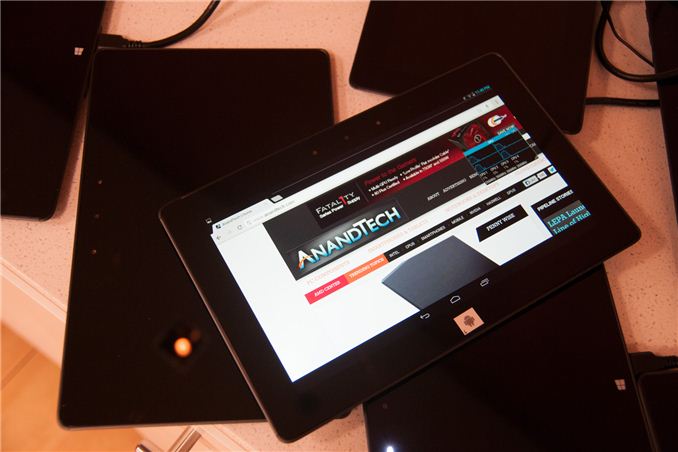
Earlier this year Intel unveiled Silvermont, its first true architectural update to Atom since its introduction in 2008. I won’t rehash Silvermont’s architecture here, but it’s designed to be a true test of Intel’s performance in the ultra mobile space. Leveraging Intel’s first 22nm SoC process and a very low power/efficient microarchitecture, Silvermont aims squarely at the latest Krait cores from Qualcomm and ARM’s Cortex A15.
Today Intel takes the next step forward, introducing the first tablet SoC based on Silvermont: Bay Trail.
Bay Trail takes up to four Silvermont cores, and for the first time in an ultra mobile Intel SoC pairs them with Intel’s own graphics IP. That’s right, rather than using a GPU block from Imagination Technologies, Bay Trail leverages the same GPU architecture as Ivy Bridge.
The first Bay Trail tablets will be shipping by the end of the year, across both Android and Windows 8.1. Intel expects Bay Trail to show up in tablets and 2-in-1s priced below $599, with everything above $599 falling under Haswell’s jurisdiction.
Bay Trail & Branding
Bay Trail, like all Atom platforms before it, will be available in multiple form factors. Unlike the Atoms of yesterday however, the SoC will carry Pentium and Celeron branding when used in notebooks and desktops. Intel didn’t disclose too much about its Silvermont plans in other form factors other than some basic naming:
Basically notebooks ship under the Pentium N3000 & Celeron N2000 series, while desktops will carry Pentium J2000 & Celeron J1000 branding. All Pentium SKUs seem to be quad-core, while Celeron SKUs will be available in both dual and quad-core versions.
Thankfully Intel shied away from introducing the same complexity with its tablet focused Bay Trail parts. All Bay Trail tablet SKUs carry Atom branding. There’s the quad-core Z3700 series and the dual-core Z3600 series.
Although Intel offers both dual and quad-core Bay Trail SKUs, they are both based on the same single physical design. In other words, dual-core Bay Trail parts are just die harvested quad-core parts. Intel isn’t disclosing die size or transistor counts, which is ironic (and disappointing) given that Apple just disclosed both (or at least relative magnitude of one) for its A7 SoC.
Internally, the Bay Trail design is pretty nice. There are either two or four cores enabled, each pair with a shared 1MB L2 cache (2MB total for a quad-core part). Intel is following the unfortunate lead of everyone else in the mobile industry and advertising max turbo frequencies exclusively.
Thankfully Intel hasn’t yet decided to obfuscate max non-turbo frequencies:
| Bay Trail Turbo Speeds | ||||||||
| Z3770 | Z3770D | Z3740 | Z3740D | Z3680 | Z3680D | |||
| Max turbo frequency | 2.39GHz | 2.41GHz | 1.86GHz | 1.83GHz | 2.0GHz | 2.0GHz | ||
| Max non-turbo Frequency | 1.46GHz | 1.5GHz | 1.33GHz | 1.33GHz | 1.33GHz | 1.33GHz | ||
In general you’re looking at 1.33GHz - 1.46GHz max non-turbo frequencies, with Bay Trail being able to turbo up to anywhere between 1.83GHz and 2.40GHz depending on SKU.
Although the core architecture is 64-bit in design, there will be no OS support for 64-bit Bay Trail at launch. Windows 8.1 with Connected Standby appears to still be 32-bit only, and obviously Android is 32-bit only at this point as well.
The memory interface is fairly ridiculous by mobile standards. You either get two 64-bit LPDDR3 channels (128-bit total width) or a single 64-bit DDR3L channel. In the case of the former, that’s the same memory bus width as Apple’s A5X/A6X line of SoCs as well as the standard Core i3/i5/i7 parts. Max supported memory frequency is 1066MHz in dual-channel LPDDR3 mode, or 1333MHz in single-channel DDR3L mode. The only benefit to the latter is really cost, as Bay Trail will purportedly show up in some very cheap devices.
The GPU is Intel’s own Gen7 graphics core, a cut down implementation of what we first saw in Ivy Bridge. I suppose it’s premature to expect Merrifield, Bay Trail’s smartphone counterpart, to also use Intel’s own graphics core but it’s clear this is the direction Intel is headed in - and away from licensing IP from Imagination Technologies.
Rather than 16 EUs in the Ivy Bridge GT2 configuration (HD 4000), Bay Trail’s HD Graphics core ships with 4. The 4 EUs are otherwise effectively identical to what we found in Ivy Bridge. The GPU can dynamically scale frequency and share power between itself and the CPU cores. Minimum GPU frequency on Bay Trail is 311MHz and a max GPU frequency of 667MHz (or 688MHz for the DDR3L SKUs).
Intel is quick to point out that Bay Trail’s GPU supports DirectX 11 and OpenGL ES 3.0. Unfortunately this support list appears limited to Windows. Under Android, it’s unclear whether or not Bay Trail will ship with anything above OpenGL ES 2.0 support. The same goes for GPU accelerated Renderscript. Bay Trail supports up to 2560 x 1440 displays over eDP1.3/DP1.2, or 1080p over HDMI. Panel Self Refresh is also supported.
Video encode and decode blocks also shifted away from Imagination in Bay Trail. Both IP blocks are custom from Intel now. The ISP (Image Signal Processor) is from Silicon Hive (an Intel acquisition).


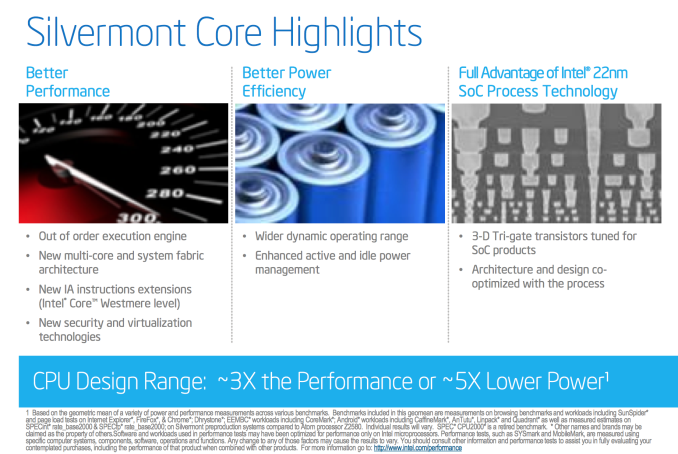
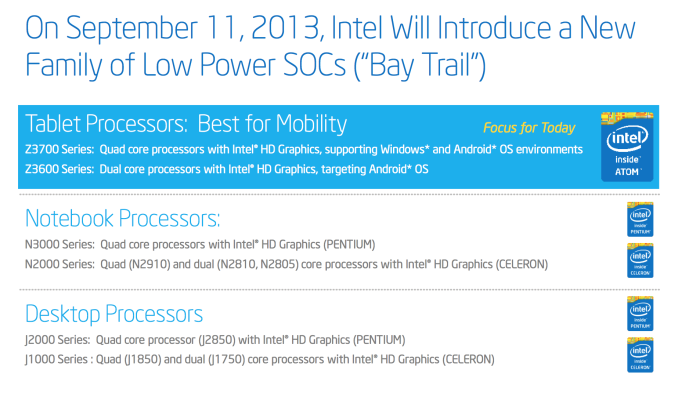
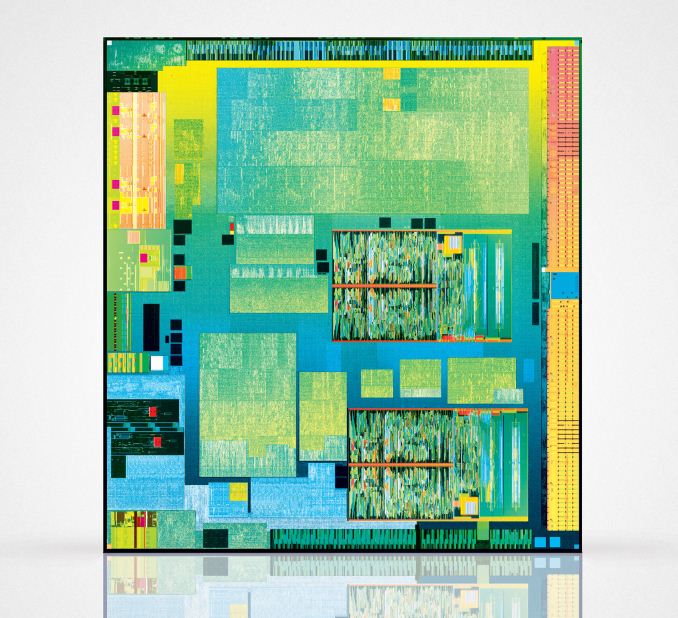
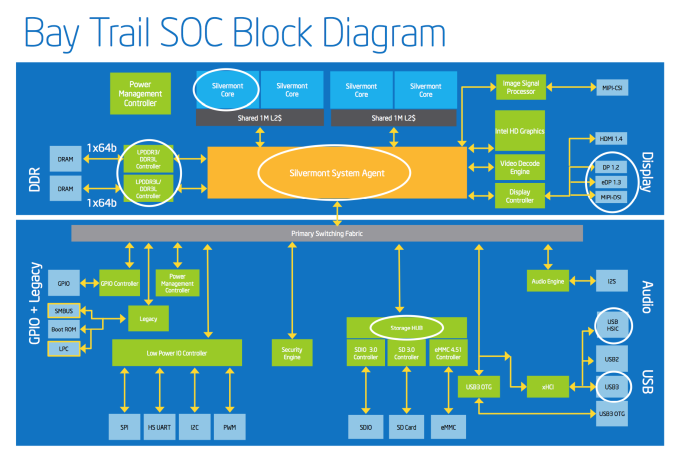
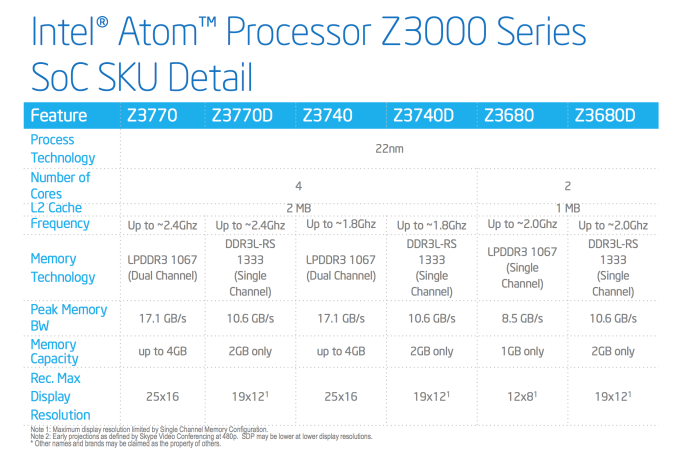
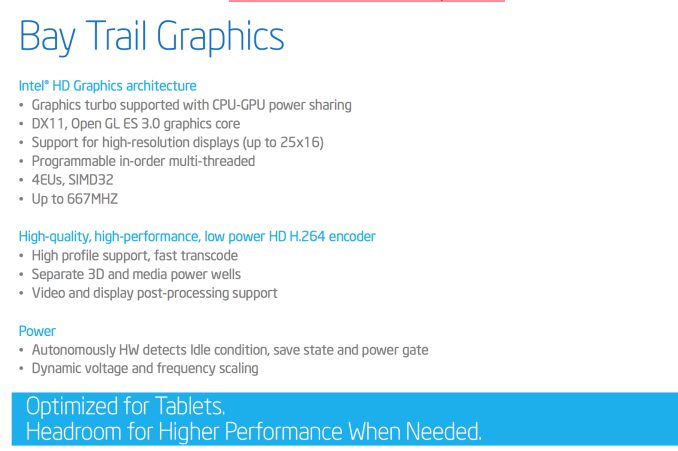
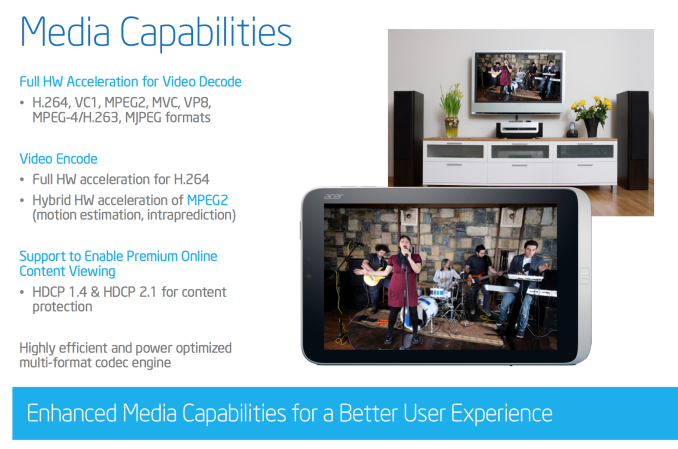








190 Comments
View All Comments
Bob Todd - Wednesday, September 11, 2013 - link
Where are all the people that kept claiming it was impossible for Silvermont to have better CPU performance than Kabini in previous articles? It's either as fast or faster with significantly less power draw than the AMD part. GPU performance is a bit of a downer but right inline with what I expected based on a cut down HD4000. Kabini's GPU kicks its ass, but it's not like either of them is fast enough for me to play real PC games on so it's immaterial to me for now. I'd like this in an 8" or 10" with a 2560x1440 display, a reasonably fast IO solution, and Windows 8.1 for ~$500.Nagorak - Thursday, September 12, 2013 - link
Anyone who was saying that was an idiot. Intel's way ahead of AMD on both their production process and their CPU architecture. If this part weren't way better it would have been surprising.fteoath64 - Thursday, September 12, 2013 - link
"Intel's way ahead of AMD", by 30% is good but not great. I would say by 60% would be great but it is not the case. AMD is also on generation older process node, so it is not that bad for them as their gpu makes up the difference in some ways.Tangey - Wednesday, September 11, 2013 - link
In your valley view overview a while back, you expressed amazement that imaginations video decode hardware was present, but you were certain it was. Has this now been dropped in baytrail ?tabascosauz - Thursday, September 12, 2013 - link
I was going to be excited about Silvermont and all was well until I saw the GPU charts and changed my mind. Absolutely miserable performance.Come on, Intel. At this rate you would have been better off using IT GPUs. Care to explain using only 25% of HD 4000's EUs? I don't think heat is an excuse here, and power consumption shouldn't be either.
MyOpinionDoesNotMatter - Saturday, September 14, 2013 - link
It took Intel a few generations to optimise their CPUs for low TDP....in time they will likely do the same for their integrated GPUs. Probably what the Intel engineers are focusing on right now.shywho - Thursday, September 12, 2013 - link
I do not see any DSP on this chip - similar to the Hexagon DSP on the QualComm Snapdragon or the Icera on the Tegra. Is this supposed to be external to the chip?althaz - Thursday, September 12, 2013 - link
This is interesting and somewhat impressive, but to be truly relevant there's a couple of other things required:* +50% graphics performance
* Integrated modem
* Release it last year
ET - Thursday, September 12, 2013 - link
This shatters AMD's tablet aspirations. If the Z3770 performs around the A4-5000, then AMD's low power APU, with 2 cores and running at 1GHz, using more power, is pretty much a no go. From the few benchmarks here it looks like the new Atom's GPU performance will be around that of the 225MHz AMD GPU.All in all, while I'd love even better GPU performance, I think I'll be happy with a Z3770 tablet, and in CPU performance it will be an upgrade to my E-350 laptop. I'll be waiting to see what Airmont brings next year.
silverblue - Thursday, September 12, 2013 - link
AMD needs a Kabini which is clocked at A4-5000 levels but has a much smaller GPU. That in itself might make for a more balanced chip.